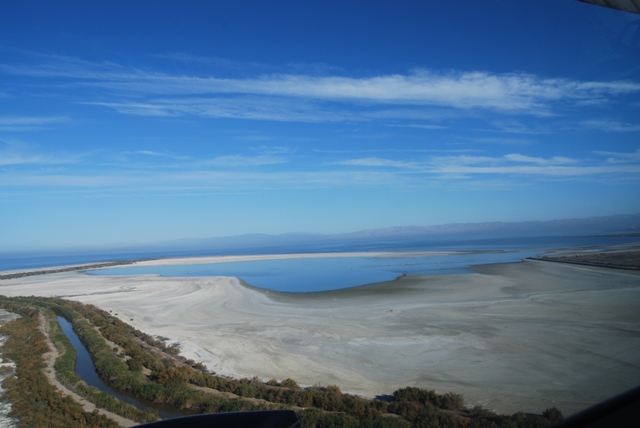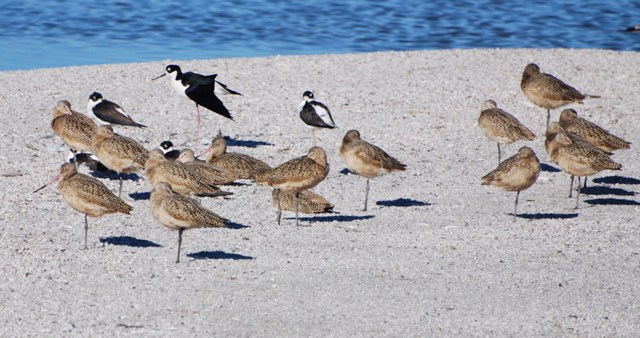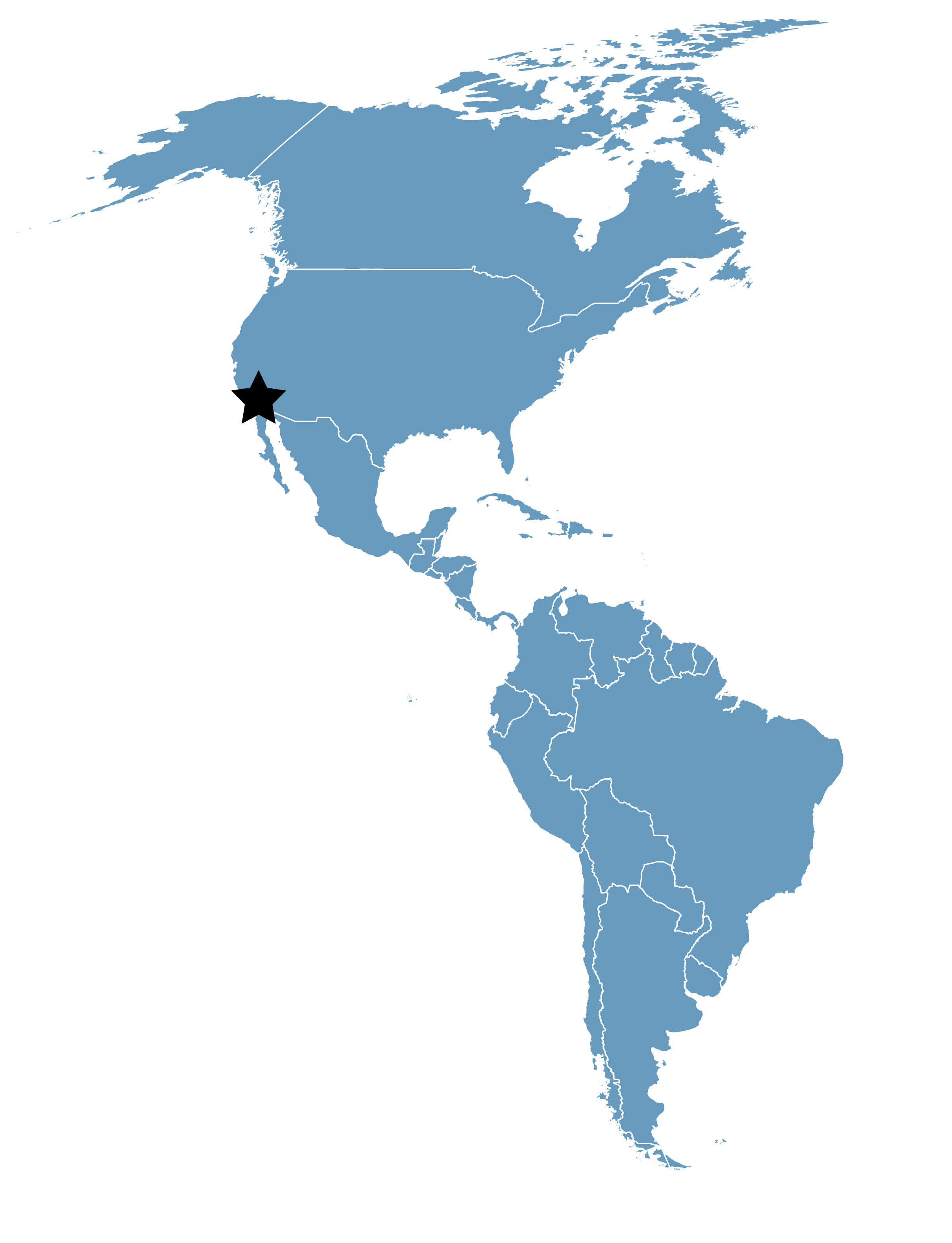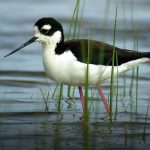Sonny Bono Salton Sea National Wildlife Refuge
Location
California, United States
Category
Regional
Basis for Designation
Supports more than 20,000 shorebirds annually.
Size
15,216 hectares (37,600 acres)
Date Designated
April 2002
Site Owner
U.S. Fish and Wildlife Service
Site Partners
San Diego Audubon Society
Bob Miller
Overview
The Sonny Bono Salton Sea National Wildlife Refuge (NWR) consists of two separate managed units, 18 miles apart. The land is flat, except for Rock Hill, a small, inactive volcano located near Refuge Headquarters. The refuge is bordered by the Salton Sea on the north and farmlands on the east, south, and west. Because of its southern latitude, elevation of 227 feet below sea level, and location in the Sonoran Desert, the refuge sees some of the hottest temperatures in the nation. Daily temperatures from May to October exceed 100°F with temperatures of 116°-120°F recorded yearly. The refuge contains marsh, open water, brackish ponds, Salton Sea shoreline, and agriculture fields. None of these areas are affected by the tide, only wind-driven saltwater into freshwater. All areas are managed actively. The current Salton Sea is “man made.”
Because of its southern latitude, elevation of 227 feet below sea level, and location in the Sonoran Desert, the refuge sees some of the hottest temperatures in the nation.
This site is of critical importance to wildlife, including endangered species and species of concern (e.g., Yuma Clapper Rail, Brown Pelican, Snowy Plover, Desert Pupfish) and migratory waterfowl (ducks and geese). The Salton Sea and neighboring wetlands are some of the few remaining wetlands in California. The area has increasingly become an important stopover and staging area for hundreds of thousands of migrating shorebirds, gulls, and passerines.

New River Backwater. Photo: USFWS.
Current Threats
Water transfers have allocated over 200,000 acre feet of Colorado River water outside the Imperial Valley. Over half of shoreline and mudflat habitat used by many species of shorebirds has been lost.
Major Causes of Disturbance
Water diverted from the Colorado River to San Diego, to serve as municipal water, affects the refuge’s resources. Less water will be allocated for agriculture in the Imperial Valley, thus less water will be available to maintain the current level of the Salton Sea. The decline of current shoreline will drastically change the Salton Sea ecosystem and will impact many wildlife species including shorebirds and colonial waterbird populations.

Marbled Godwits and Black-necked Stilts. Photo: USFWS.
Management and Research Activities
Management programs provide for maintenance and improvement of wintering waterfowl and shorebird habitat. Waterfowl programs are designed to limit waterfowl depredations to adjacent croplands and habitat improvement for various endangered species (e.g., Yuma Clapper Rail). The refuge is involved with disease issues for fish and wildlife of the Salton Sea. Such fish and wildlife are removed from the area in order to prevent the spread of disease and sent to the lab for investigation. Rehabilitation of sick birds is also coordinated by the refuge.
Some management and research priorities should include the extent to which declining shoreline will have an effect on current avifauna. Other issues and research priorities regarding shorebirds currently center on the proposed listing of the Mountain Plover as Threatened. Land acquisition for this species will increasingly become a management issue.









